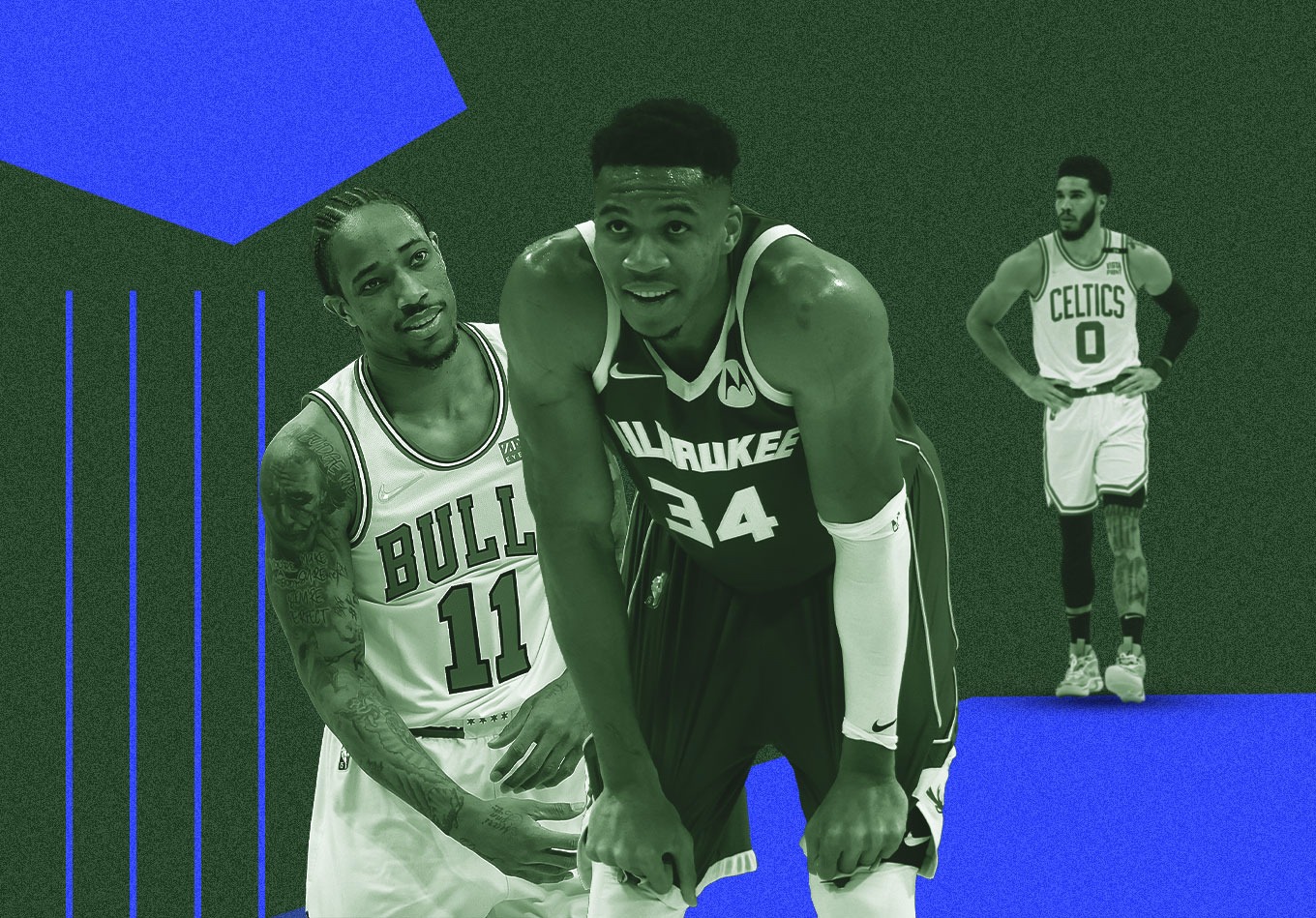After DeMar DeRozan went 6 of 25 from the floor in the Chicago Bulls’ Game 1 loss to the Milwaukee Bucks, the All-Star wing appeared content with his shot selection.
“Nothing they’re doing defensively. Most of the shots I took were wide open,” he said. “I’d live with them again. Like I said, no way in hell I shoot 6 for 25 again.”
Despite his lengthy playoff foibles, DeRozan was correct in that assessment. Many of his shots were open jumpers that he’d routinely hit throughout the regular season en route to an All-NBA-caliber campaign. If Milwaukee defended him in a similar manner moving forward, he’d likely deliver and return to his supernova scoring ways.
Three days later, the Bucks maintained their approach against him and he caught fire for 41 points, leading Chicago to a 114-110 victory. Milwaukee played traditional drop coverage to wall off the rim and its point-of-attack defenders fought over the top of screens. DeRozan enjoyed ample room to saunter into his trademark midrange buckets and buried the Bucks to knot the series at one.
Entering Game 3, Milwaukee seemingly agreed with DeRozan’s post-Game 1 sentiment. He wouldn’t shoot 6 for 25 again. Only its motivations were different: DeRozan wasn’t going to find the space to take 25 shots again. The Bucks amended their scheme and refused to let DeRozan be the one predominantly carrying Chicago’s scoring burden.
In Games 1 and 2, they wiggled over screens, stayed anchored near the rim and weren’t particularly aggressive helping off of shooters. Beginning with Game 3, they iced pick-and-rolls, sent the big man closer to the level of the screen and barricaded any angle for DeRozan to get back to his right side.
They also switched far less often to avoid handing him favorable matchups, cognizant of his propensity to exploit switches during the regular season. From that point on, Jrue Holiday and Wesley Matthews defended him for almost the entirety of his minutes.
The collateral of that shift was not so much felt in his raw efficiency (47.1% true shooting in Games 1 and 2 vs. 49.3% in Games 3-5). Rather, DeRozan’s scoring volume experienced a precipitous drop. Across the first two games, he attempted 56 shots in 87 minutes, a stark contrast from his 39 shots in 116 minutes over the ensuing three contests. Somebody could’ve beaten Milwaukee again. It just was not allowed to be DeRozan.
When the Bucks directed the offense away from DeRozan, they also packed the paint and funneled possessions to Chicago’s bevy of unreliable floor-spacers. In Games 1 and 2, 33.5% of the Bulls’ field goals came beyond the arc, approximating their 30th-ranked, season-long output. In Games 3-5, that number spiked to 45.9%, which would’ve been higher than 29 teams during the regular season.
Zach LaVine and Coby White were Chicago’s only effective, high-volume 3-point shooters in the rotation. Milwaukee was willing to let anyone but LaVine – who missed Game 5 due to health and safety protocols – end possessions with a long-range bomb if it prevented DeRozan from snaking his way into midrange pull-ups.
Although Nikola Vucevic put together some serviceable offensive outings, the Bucks also largely neutralized his connective playmaking as a release valve off of pick-and-rolls with DeRozan. With Milwaukee rotating an extra defender on his dives/pops or muddying pocket pass windows for ball-handlers, Vucevic didn’t garner many chances to create for others and was primarily relegated to a suboptimal, play-finishing role offensively.
DeRozan’s shot and usage profiles drastically changed as a result of the Bucks’ teeming philosophy. According to Cleaning The Glass, a playoff career-high 56% of his shots came between 14 feet and the 3-point line, while his rim frequency fell to a playoff career-low 17%. During the regular season, those marks were 41% and 21%. Milwaukee shunned him from the paint.
In the Bulls’ aim to scheme increased real estate for him, he received more possessions winding around off-ball screens and as a spot-up threat. His five three-point attempts in Game 5 represented only the sixth time in 63 playoff appearances that he logged five-plus triples. It was emblematic of the Bucks’ decision to flood the paint and let Chicago hoist from deep instead.
Over the last two seasons, Milwaukee and head coach Mike Budenholzer have displayed considerable flexibility in their gameplan on both ends. Following two down-to-the-wire battles against a shorthanded six seed, that trait came to the forefront. They adjusted their defense to flummox Chicago’s primary initiator, required everyone else to bury them and, ultimately, coasted to three consecutive wins.
As they prepare for a second-round duel with the surging Boston Celtics, they’ll need to continue their flexibility and throw an array of looks at Jayson Tatum. He’s both better than DeRozan and flanked by greater talent.
Selling out against him will set the stage for Boston’s shooters and secondary creators, as well as Robert Williams around the rim, to thrive in ways Chicago’s ancillary talent couldn’t. How these two sides weather the imminent push-pull dynamic will be fascinating, just as it was watching Milwaukee quickly erase its DeRozan Problem.
Enjoy this? Subscribe to our mailing list to receive exclusive weekly content.
Graphic design by Matt Sisneros.
